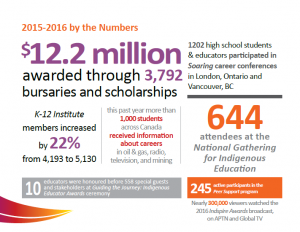First Peoples’ Cultural Council
The First People’s Cultural Council is a BC Provincial Crown Corporation formed in 1990 and supported by the First Peoples’ Heritage, Language and Culture Act with a mandate to assist BC First Nations in their efforts ot revitalize their languages, arts, and cultures.
As my research is focussing on the use of technology for the preservation of language, I was interested to see this site outline First Nations’ language support across various funding categories, including: Mentorship-Apprentice, Language and Culture Camps, the BC Language Initiative, and the FirstVoices resource that I have mentioned in previous posts.
This site is a fulsome resource for many facets of language learning and language preservation including a Language Toolkit for communities wishing to develop language revitalization projects.
Status of Aboriginal Languages in Canada
This page is not so much a tremendous resource, as it is a great infographic (and who doesn’t love infographics) provided by a company called WinTranslation, which is an Ottawa-based for-profit translation service. Providing language translation is important for many reasons in the corporate, advertising, and communications world, and I was very pleased to see that this company provides peer-reviewed translation services into over 35 of Canada’s Aboriginal Languages.
Census 2016: The Aboriginal Languages of First Nations people, Métis and Inuit
This Statistics Canada webpage is a summary of information from the 2016 Canadian census and is current as of October 25, 2017. It contains a number of significant highlights including a growth of over 3% in the number of Aboriginal People who could speak an Aboriginal Language over the past decade. So much of what we read speaks of a decline in Aboriginal language use, and more concerning, the growth in the number of Aboriginal languages in Canada that are in danger of becoming extinct – in that light, this census data is encouraging.
The census data also points to young Aboriginal people learning their languages at a younger age, and an uptick in Aboriginal language instruction.
First Haida language film offers rare, powerful glimpse of Haida people
OK, perhaps this is veering off the web-based resource as well, but it is very connected to my research theme, and super relevant to the discussions in the course. I stumbled across this CBC – The National article (and then, as one does, many other articles on the same topic) this week, and was excited to see how film and technology are playing a role in preserving language and culture in this surprising project.
Creating a feature-length film in a language that only a few people speak is both a tremendous undertaking (who can learn and speak the language well enough to fill the roles?) and a significant financial investment. While the first is a logistical challenge, the second represents a pattern of hope in the restoration of traditional languages and can only mean good things to come.
Pathways to Technology – Interactive Map
Pathways to technology is a project aimed at bringing high-speed, reliable, and low-cost internet to First Nations. Recognizing that connectivity brings access to health care, education, employment, and economic growth, this project looks to remove some of these barriers for remote, and typically under-connected communities around BC.
The link (in the title) directs towards an interactive map of the 203 First Nations around BC, and displays their name and connection type. As an educator who visits these communities from time to time, this information is more than informative, it directs the kids of supports that we provide, and opens doors to different conversations.

